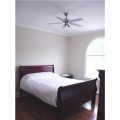Attending a trade show can be stressful for both buyers and sellers. The reason is simple – both want to maximise the experience, but the experience can be overwhelming. For sellers, there is all the hustle and bustle of competitors, the pressure to put on a good display, and the need for an interesting and persuasive marketing spiel so that they can close deals and network effectively.
For buyers, there is the hustle and bustle of everything around them, the confused mass of exhibition stands with reps trying to entice them so they can explain why their products or services are a cut above the rest, and the need for a clear, level head so they can tell the good deals from the bad.

A lot has been written about how sellers can maximise their trade show experience, but buyers need some help too. So, we’re going to look at how buyers can maximise their trade show experience and go home feeling like they didn’t waste their time.
Even buyers have to prepare
Internet Trade Show List recommends that you start preparing as a buyer one to two months before the show. Start off by creating goals. What is it that you want to achieve at the show? Are you mostly out to network, or do you want to find new suppliers and actually buy stuff?
Then request a list of exhibitors (this will probably be available on the trade show website) and do a little bit of research into the companies that will have displays pertinent to your business. If possible, try to pre-book some private meetings with the companies that seem the most promising. If your existing suppliers are going to have stands, then make an effort to see them. This not only helps your business relationship, but will also give you an opportunity to talk to them about any new products that are about to hit the market, as well as discuss any technical matters or to hash out the fine print in a contract.
Internet Trade Show List recommends that you visit the exhibition stand before you go to the meeting. It’s not just out of idle curiosity. It’s so that you can meet as many people as possible, and possibly get a feel for the business.
You should also use this time before the show to plan which lectures, workshops and presentations you’d like to attend. Remember, however, not to fill your schedule to capacity, as you still want some time to take a stroll about the place and to stop at whatever stands pique your interest.
Find your bearings
Visit the exhibition website and download the map – which is usually made available a couple of weeks before the show. Start familiarising yourself with the layout. One of the worst things about attending a trade show is not knowing where you are or where to go. It’s when you wander about in a bit of a daze that you start getting frustrated and the experience becomes sour and a bit of a waste.
By doing a bit of homework beforehand, you can save yourself that frustration, be on time for all your meetings, and make the experience that much more enjoyable.
Avoid common buyer mistakes
Nicole Reyhle says that trade show buyers tend to make three common mistakes:
1) Over-buying
The selection is dizzying and salespeople can be very persuasive, so it’s understandably easy to overspend. Another problem is that some vendors have restrictions regarding minimum orders, so you often find yourself buying too much to get a good deal. Reyhle says that you should always ask if these terms can be altered. Some vendors are flexible if you are reasonable and polite about the matter. She recommends that you discuss altering the following terms to make a difference to your budget: Payment due dates, minimum order amounts, and shipping costs.
2) Impulse buying
With so many vendors clamouring for your attention – not to mention your business – it’s easy to feel pressured to make a decision. Salespeople can also be very, very persuasive (it is their job after all). Make a conscious decision to take your time, to see as many vendors as possible, and to weigh up all the pros and cons of each before you commit yourself to a purchase. It will take longer because you’ll have to visit your chosen vendors twice, but the savings will be worth it.
3) Accepting standard terms
The terms and conditions imposed by vendors are designed to benefit them and not buyers. You need to let vendors know what your company’s terms are regarding purchase orders and business transactions, so you can find suitable middle ground. Remember to always conduct these negotiations with respect. You won’t get anywhere if you come armed with a lot of attitude.
It’s possible for both sellers and buyers to enjoy trade shows. It takes a little preparation and some strong self-discipline, but a good time can be had by all.
Featured images:
License: Creative Commons
image source
Jemima Winslow loves trade shows. She loves the hustle and bustle and confusion. But she usually goes out of curiosity and not as a serious buyer – to the eternal frustration of the vendors.
































No Comments
Leave a comment Cancel